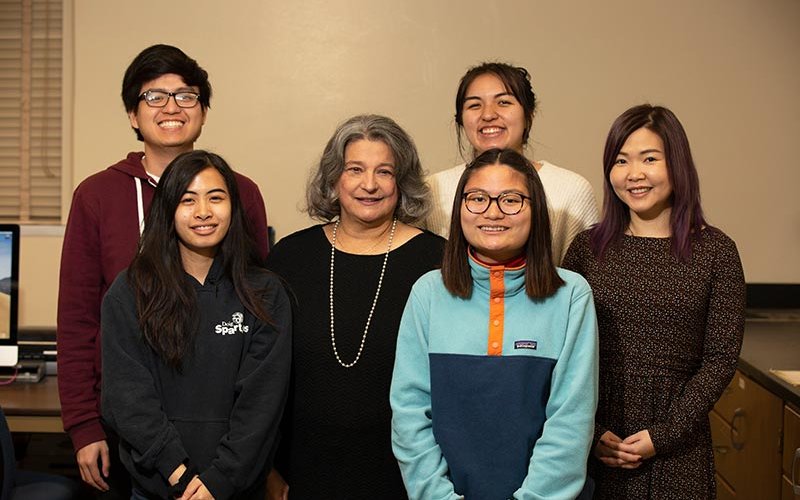
For two decades, Barbara L. Gonzalez, professor of chemistry and biochemistry, has pursued research to help students succeed in their study of chemistry.
Her contributions in the science education field have not gone unnoticed. The former high school math and science teacher who joined Cal State Fullerton in 1999 has been elected as a 2019 Fellow of the American Association for the Advancement of Science (AAAS). The national honor is given to individuals for their extraordinary achievements.
“This was a complete surprise to me. I am grateful, honored and humbled to think that my life’s work has been recognized by the AAAS,” Gonzalez said.
The AAAS, which publishes the prestigious journal Science, announced the 2019 Fellows today (Nov. 26). The tradition of AAAS Fellows began in 1874 and it is an honor bestowed upon members by their peers because of their scientifically or socially distinguished efforts to advance science or its applications.
Gonzalez was elected for her “noteworthy leadership and transformative teaching practices, focused on visualizing molecular structure to explain chemical processes by exploring representations of structure with collaborative visualization research.” She will be recognized Feb. 15 at the Fellows Forum during the AAAS annual meeting in Seattle, Washington.
What is the focus of your research?
My research focuses on the impact of visualization to improve chemistry literacy. Visualization is the act of creating a mental representation of a concept, resulting in an image or model. Scientists frequently use models — such as a solar system model of an atom with different energy levels — to help others learn science. My current research explores how instructor speech and gesture may serve as forms of visualization to enhance the understanding of science. Gestures are a form of nonverbal communication in which visible bodily actions alone or in conjunction with speech convey information and represent a model within the context of science instruction.
How do you hope you have helped students achieve in chemistry?
I sincerely hope that the students who have been taught by me at CSUF have learned to become critical thinkers and independent learners. Visualization that leads to understanding of scientific models is a way that I have tried to teach students to use to help themselves to learn not only chemistry, but subjects beyond science itself.
What are you most proud of after 20 years at CSUF?
I am most proud of the development of the first semester general chemistry course that helped to contribute to a change from large lecture instruction to smaller sections, with active-learning instruction as an emphasis. I also revised the course’s lab curriculum, which created lab experiences that includes guided inquiry — a process by which learners develop knowledge and understanding of scientific ideas — and using technology to collect shared data. These changes have helped faculty members to advise their students toward success in STEM — science, technology, engineering and mathematics — majors.
I am also proud to have mentored more than 30 graduate and 60 undergraduate students in my research. I am proud of their accomplishments as they pursue careers as pharmacists, high school chemistry teachers, physicians and forensic scientists.
What is your goal for students working in your lab?
My goal for students is to have an authentic experience in research that allows them to learn what questions to ask from a theoretical perspective, how to design experiments to search for answers to those questions, to analyze and interpret data, and how to deal with uncertainty. Research explores what is not known, and as a human endeavor, it is not a linear process without obstacles. Learning to handle challenges and persisting is an important life lesson.
As a Latina scientist, how do you hope you have inspired female students?
In my experience at CSUF, and particularly in the College of Natural Sciences and Mathematics, females are in the majority in the chemistry classes that I have taught and in my research group. It is very important that females, and any underrepresented minority, have role models whose presence demonstrates that it is possible to persist and thrive in a STEM career. I hope that my love for chemistry and passion for chemistry education research serves as an inspiration for all the students who I teach, advise and mentor at CSUF.